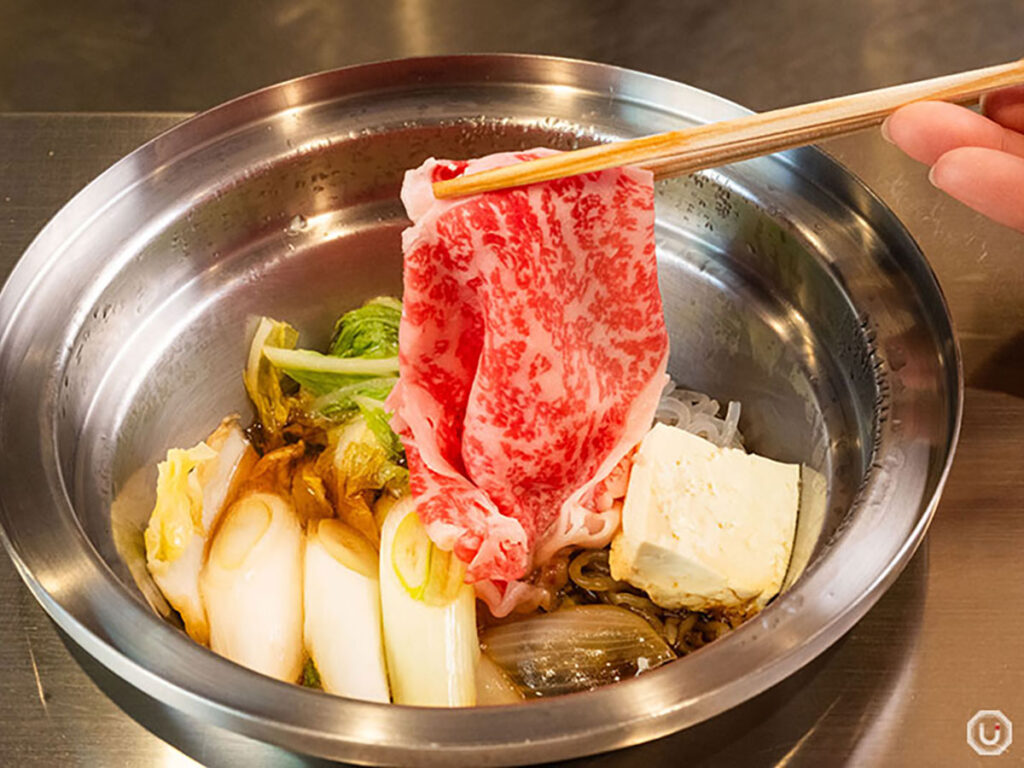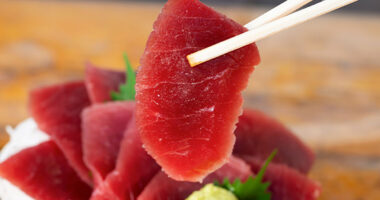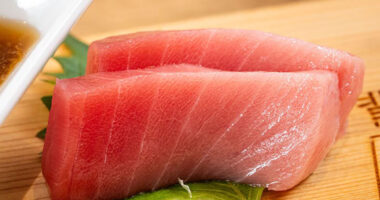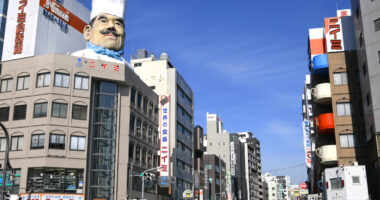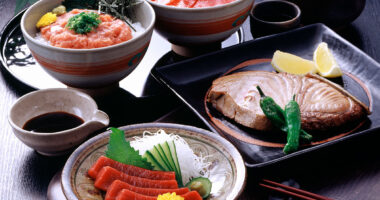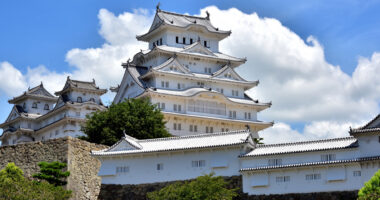This article is a translation of the original Japanese text.
Sukiyaki is one of Japan’s iconic hot pot dishes, originating from the late Edo Period (1603–1868) to the Meiji (1868–1912) Period.
Known for its unique preparation, thinly sliced beef and vegetables are simmered in a sweet-savory soy-based warishita broth and dipped in raw egg before eating. With distinct cooking methods in Kanto and Kansai regions, its regional diversity adds to its appeal. For tourists visiting Japan, sukiyaki is a must-try traditional dish, boasting immense popularity.
Japanese hot pot dishes extend far beyond sukiyaki. For those interested in learning more about the types and selection of Japanese hot pot dishes, please refer to this article.
Sukiyaki: History and cultural background
Understanding sukiyaki’s history reveals its deep cultural significance. Evolving alongside Japan’s culinary transformations, sukiyaki holds value beyond mere cuisine.
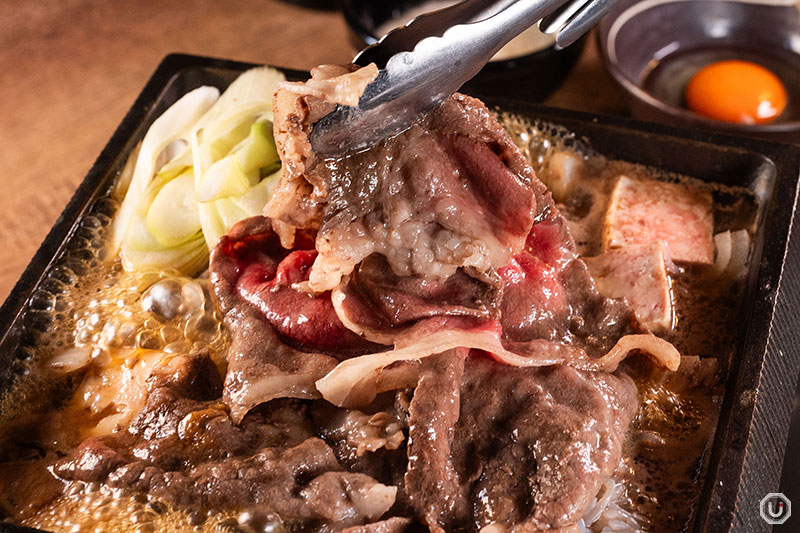
Sukiyaki Black Wagyu Beef Loin at Kyoto Taishu Sukiyaki Hokuto
Shifts in food culture from Edo to Meiji
In Japan, eating beef was uncommon until the late Edo period. However, commoners consumed wild boar or deer, which some consider the precursor to sukiyaki.
The Meiji Restoration brought Western meat-eating culture, transforming Japan’s culinary landscape. Beef spread through port cities like Yokohama, and gyūnabe (beef hot pot) restaurants gained popularity, symbolizing modernization. This paved the way for sukiyaki’s cultural integration.
Divergent development in Kanto and Kansai
Sukiyaki evolved differently in Kanto and Kansai.
In Kansai, it was called sukiyaki, while in Kanto, it was known as gyunabe, each establishing distinct cooking methods. The first beef hot pot restaurant emerged in Kyoto, laying the foundation for Kansai-style sukiyaki, which spread nationwide.
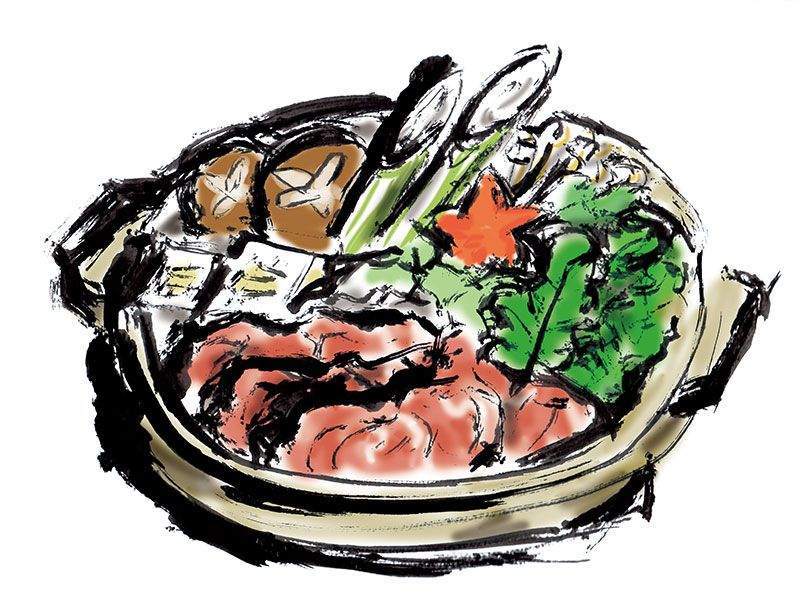
Sukiyaki (photo for illustrative purposes)
Origin and etymology of the name
The name sukiyaki has several origin theories. The most prominent suggests it derives from farmers in the Edo period using a suki (plow) to grill meat or tofu outdoors. Another theory links it to sukimi, meaning thinly sliced meat.
While the true origin is unclear, both theories reflect sukiyaki’s roots in practical, everyday cooking. This humble beginning is why sukiyaki remains a beloved, approachable dish today.
Basic characteristics and preparation of sukiyaki
Sukiyaki’s allure lies in its unique preparation and eating style. Understanding its distinct features enhances appreciation of this dish compared to other hot pots.
Essential tools and ingredients
Sukiyaki is cooked in a shallow iron pot, featuring thinly sliced beef, various vegetables, and tofu simmered in a sweet-savory soy-based broth. The iron pot, known for high heat conductivity, ensures even cooking and enhances presentation. Its shallow shape makes ingredients easy to retrieve.
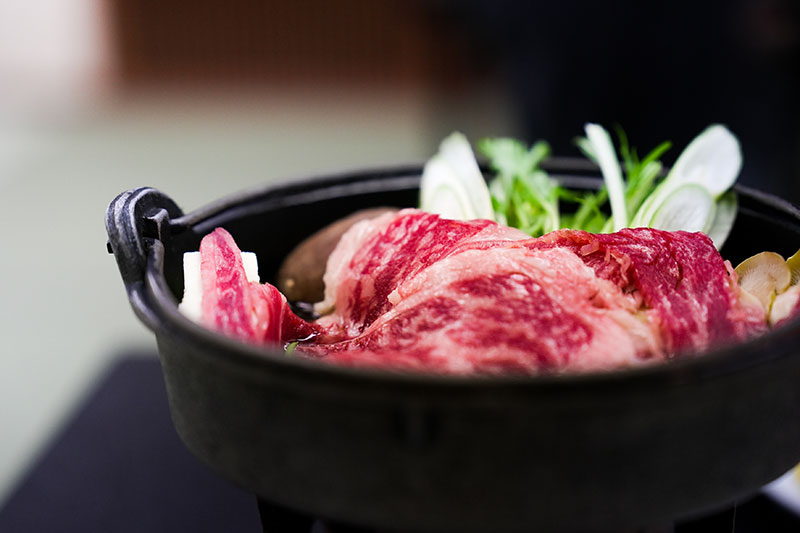
Key ingredients include thinly sliced beef, green onions, napa cabbage, shungiku (chrysanthemum greens), onions, shiitake mushrooms, enoki mushrooms, shirataki noodles, and tofu. Seasonal ingredients like matsutake mushrooms or bamboo shoots may be added for richer flavors.
Unique eating style with raw egg
Sukiyaki’s signature feature is dipping cooked ingredients in raw egg before eating. This method cools hot food, adds a creamy flavor, and boosts protein intake, making it both practical and delicious. While some foreign visitors hesitate to eat raw eggs out of health concerns, Japan’s fresh, safe eggs ensure a worry-free experience.
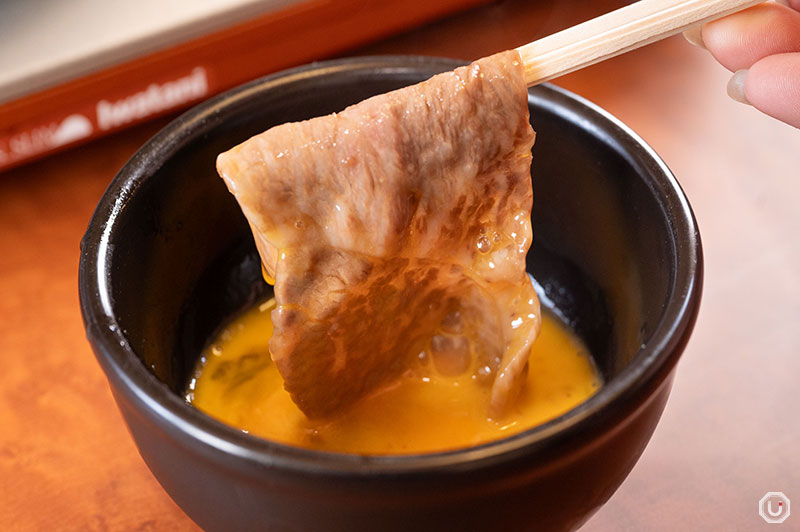
Sukiyaki dipped in raw egg at Sukiyaki Imahan Honten
Eating without eggs is also an option, allowing diners to enjoy sukiyaki’s sweet-savory flavor directly. Tourists unfamiliar with raw eggs and averse to trying them should confirm with the restaurant.
Basic preparation steps
Sukiyaki preparation is relatively simple but requires attention to ingredient order and heat control. Start by heating the pot and lightly searing the beef. Then, add warishita broth and vegetables sequentially, eating once everything is cooked.

Sukiyaki from the Sukiyaki (Beef and Wheat gluten cake) and Rice Set at Kokappou Ohashi Roppongi
Heat management is crucial: avoid high heat and simmer on medium to infuse flavors. Adding udon noodles as a final course creates a delicious, broth-soaked dish.
Kanto-style vs. Kansai-style: differences and appealing points
Sukiyaki has two main styles—Kanto and Kansai—each with distinct preparation and flavors. Understanding these differences reveals the diverse appeal of sukiyaki across Japan.
Kanto-style sukiyaki features
Kanto-style sukiyaki uses pre-made warishita, added to the pot before simmering ingredients. Warishita, made from soy sauce, mirin, sake, and sugar, offers a balanced sweet-savory taste, ensuring consistent flavor across all ingredients.
Kanto-style’s charm lies in its simplicity and uniform taste. Warishita makes it easy for anyone to prepare delicious sukiyaki, popularizing it as a home-cooked dish. The complex, rich flavor appeals to a wide audience.
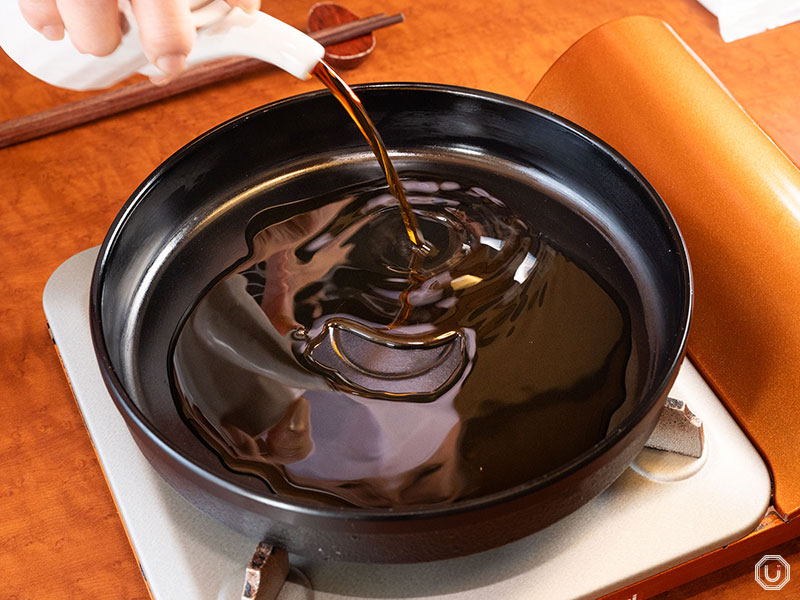
Special warishita at Sukiyaki Imahan Honten
Kansai-style sukiyaki features
Kansai-style sukiyaki begins by greasing the pot and searing beef. Sugar, soy sauce, and sake are added sequentially, followed by vegetables, allowing for nuanced flavor adjustments. This method skips pre-made warishita, relying on direct seasoning.
Kansai-style’s appeal lies in its reflection of the cook’s skill and intuition. Adding sugar first enhances the beef’s umami, with layered seasonings creating a complex taste. Adjustments with water or sake allow customization to ingredients or preferences.
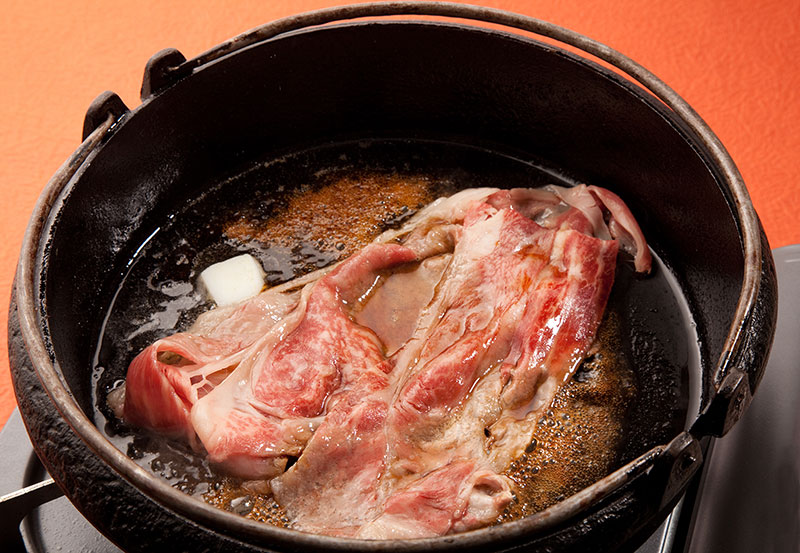
Sukiyaki preparation (photo for illustrative purposes)
Flavor differences and choosing a style
Kanto and Kansai styles offer distinct flavors. Kanto-style is smoother and uniform due to warishita, while Kansai-style is complex and bold, with seared beef and layered seasonings.
Choosing depends on preference: Kanto-style suits beginners for its accessibility, while Kansai-style appeals to those seeking refined Japanese flavors. Many restaurants offer both, making side-by-side comparisons a delightful experience.
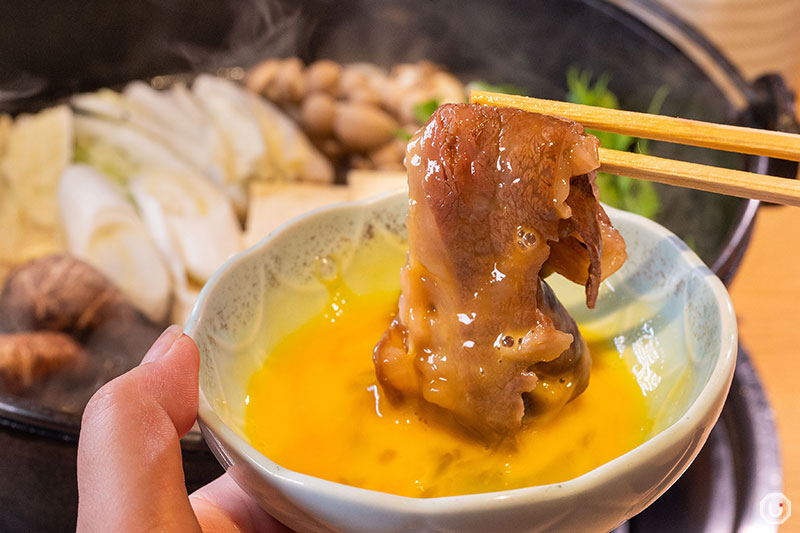
Sukiyaki from the Sukiyaki (Beef and Wheat gluten cake) and Rice Set at Kokappou Ohashi Roppongi
Diverse variations of sukiyaki
Beyond traditional beef sukiyaki, various regional and ingredient-based variations exist, showcasing sukiyaki’s adaptability and integration of local flavors across Japan.
The charm of udon sukiyaki
Originating in Osaka, udon sukiyaki, commonly known as udon suki, is a sukiyaki-style hot pot featuring udon noodles. Udon suki combines chicken, seafood, or seasonal vegetables with udon, applying sukiyaki’s seasoning for a unique flavor. This dish, rooted in Kansai’s broth culture, is especially popular among noodle lovers.
Udon suki’s appeal lies in the noodles absorbing the broth, creating a satisfying meal. Using affordable chicken or seafood makes it accessible, and as an Osaka specialty, it’s a tourist favorite.
Types and features of fish sukiyaki
Sakana suki is centered on seafood like sea bream, mackerel, yellowtail, shrimp, squid, or eel. Cooked in special warishita and dipped in raw egg, it mirrors traditional sukiyaki but offers a refined seafood umami. Developed in coastal regions, it highlights Japan’s abundant fresh seafood.
Sakana suki varies by season—sea bream in spring, hamo (daggertooth pike conger) in summer, mackerel in autumn, and pufferfish in winter—ensuring peak flavor. Skilled preparation eliminates fishy odors, showcasing culinary expertise.
Regional sukiyaki variations
Kyūshū’s tori suki uses chicken, seasoned with soy sauce, mirin, and broth, cooked with napa cabbage, tofu, and shungiku. Its light flavor complements vegetables, offering a milder alternative to beef sukiyaki.
Kani suki features crab with napa cabbage, green onions, mitsuba, mushrooms, and tofu, using a rich broth based on kombu and katsuobushi (dried bonito flakes) to enhance crab’s sweetness. Suki-shabu, where thinly sliced meat is lightly cooked like shabu-shabu, blends both styles and is gaining popularity.
New era of sukiyaki
Recently, restaurants are innovating sukiyaki, balancing tradition with unique twists to create a “new era of sukiyaki.”
In Shibuya, “IKUSHIKA” offers a novel sukiyaki experience, topping wagyū beef with uni (sea urchin) or ikura (salmon roe) for an exquisite flavor.
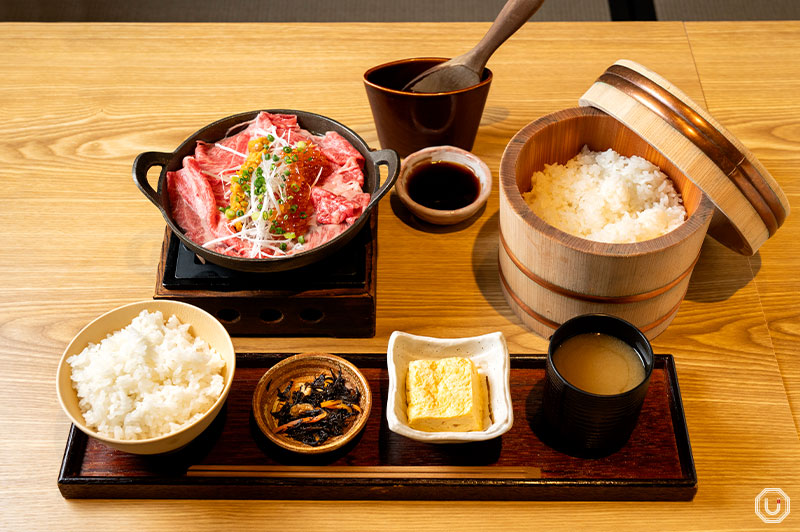
Premium Sukiyaki Set at IKUSHIKA
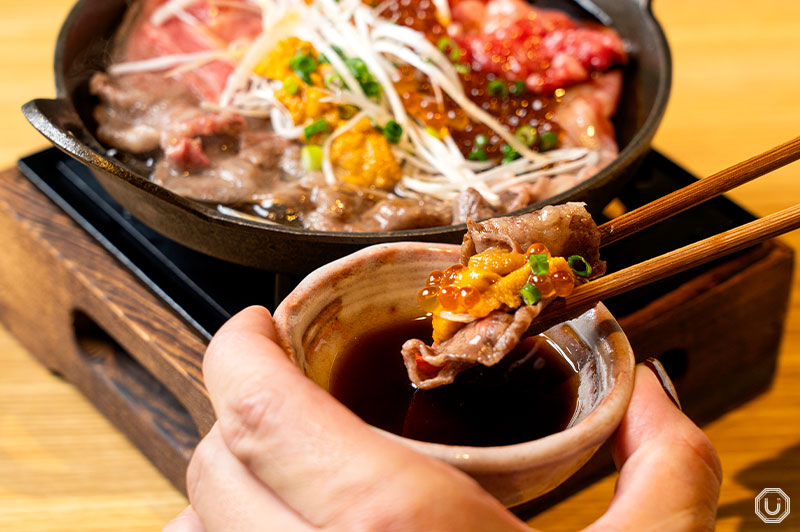
Premium Sukiyaki Set at IKUSHIKA
The taste is, needless to say, exceptional! When visiting Japan, be sure to stop by IKUSHIKA in Shibuya.
Choosing sukiyaki restaurants and ordering tips for tourists
For tourists visiting Japan, knowing how to choose a sukiyaki restaurant and order effectively is key to fully enjoying this authentic dish.
Types and features of sukiyaki restaurants
Sukiyaki restaurants range from high-end specialty venues, historic establishments, chain restaurants, to cozy local spots, each with unique charms and price points. High-end venues use premium wagyu and offer expert service, while chains provide affordable, casual dining.
Historic restaurants deliver time-honored flavors and unique sauces, while local spots offer warm hospitality and a homey atmosphere, akin to dining with locals.
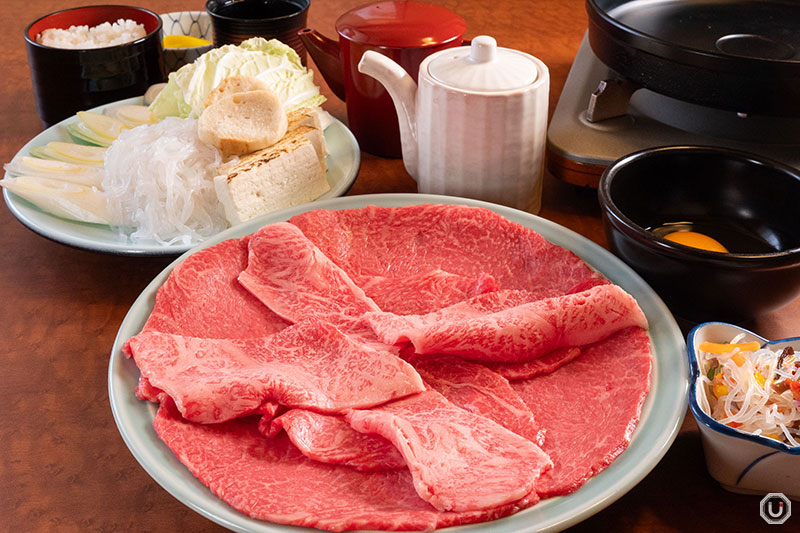
Zaku set with sides at at Sukiyaki Imahan Honten
Learn more about the century-old sukiyaki specialty restaurant “Sukiyaki Imahan Honten” in this article below!
Ordering tips and price ranges
When ordering at sukiyaki restaurants, selecting the beef’s grade or cut is common.
A5-grade wagyu is top-tier but pricey, while A4 offers excellent flavor at a lower cost. Choose based on budget, and first-timers can ask staff for recommendations to ensure satisfaction.
Prices vary by restaurant type and beef grade, ranging from 2,000 JPY per person at chains to over 10,000 JPY at high-end venues. Most offer multiple price options for flexibility.
Beef quality isn’t solely determined by grade—breed, rearing environment, and feed also matter. Many restaurants now prioritize “delicious meat at a fair price” over grade alone.
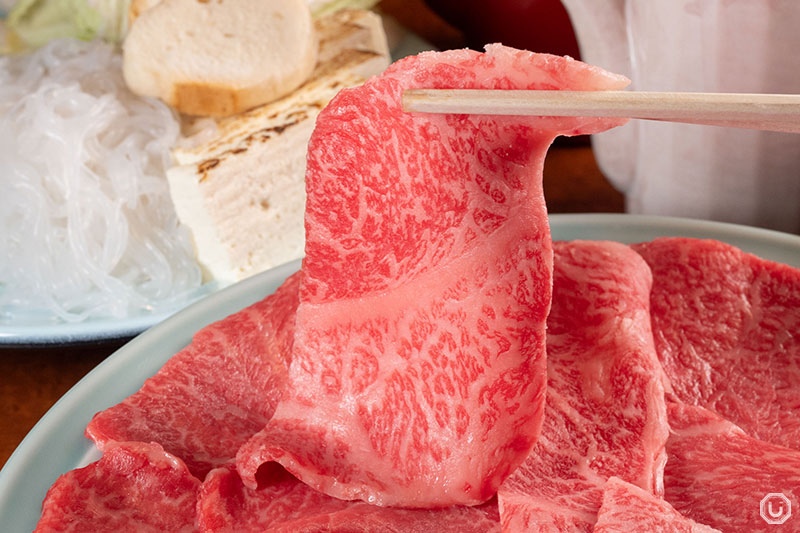
Wagyu featured in the sukiyaki at Sukiyaki Imahan Honten
Language support and cultural considerations
Many sukiyaki restaurants now cater to international tourists with menus in English and other languages, multilingual staff, and preparation explanations. Some also accommodate religious dietary restrictions or concerns about raw eggs.
Confirm language support and dietary accommodations when reserving. Asking staff about sukiyaki etiquette or preparation enhances the experience.
| Restaurant Type | Price Range | Features |
|---|---|---|
| High-end specialty | 8,000–20,000 JPY | premium wagyu, traditional service |
| Historic | 5,000–15,000 JPY | time-honored flavors, unique methods |
| Chain | 2,000–5,000 JPY | affordable, casual atmosphere |
| Local | 3,000–8,000 JPY | homey, local flavors |

Shabu-shabu Sushi Hassan offers mobile ordering in Japanese and English
For sukiyaki restaurants supporting English orders, check this out.
Summary
Sukiyaki, a quintessential Japanese hot pot from the late Edo period, is defined by thinly sliced beef and vegetables simmered in sweet-savory broth, dipped in raw egg. Kanto and Kansai styles offer distinct flavors, enhancing its appeal.
Variations like udon suki, sakana suki, and tori suki incorporate regional and seasonal ingredients for diverse enjoyment. Tourists can maximize their experience by understanding restaurant types, price ranges, and confirming language or dietary support.
Beyond a dish, sukiyaki embodies Japan’s culinary history and culture. When visiting, savor this traditional flavor to connect with Japan’s rich food heritage.
